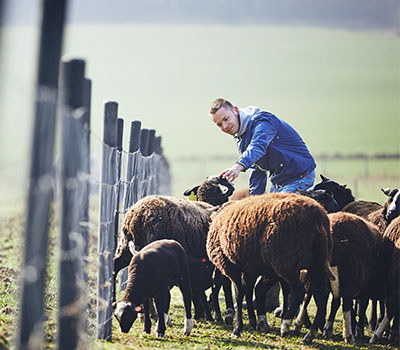Diversifying your agriculture business in uncertain times
With UK agriculture so heavily influenced by external factors, from EU-based subsidies to sourcing overseas talent, Brexit uncertainty is putting pressure on the future of agriculture, says David Prichard, planning partner and head of Marrons Planning.
Concerns over potential disruption post-Brexit has forced the biggest shake-up in farming for 40 years: The Agriculture Bill. But whilst Parliament is making moves to take control of the UK’s food security, the post-Brexit landscape remains hazy and new immigration systems could jeopardise the intake of EU talent. Skilled workers aside, uncontrollable factors such as weather and land conditions, in conjunction with issues posed by Brexit, are likely to present serious challenges for the sector. This insecurity is pushing many farming landowners to sell their assets and realise the value of their land, in order to preserve the agriculture industry.
Exploring other industries
For farming landowners, there is a need to explore alternative methods to ensure their land remains profitable. One option is to diversify into other industries, such as tourism, leisure, or housing and other forms of development. Whilst tapping into new land uses may provide significant financial benefits, farmers may benefit from seeking advice to understand the options available to them. 
Land characteristics greatly influence the viability of the various options. For example, those keen to venture into leisure and tourism could seek opportunities to transform pre-existing farm buildings into wedding venues or other types of accommodation and alternatively, outdoor activities, such as cycling and paintballing, could be set up on undeveloped land.
For farms close to existing towns or villages, a natural option could be to ringfence some land for housing development. Given the UK’s current housing crisis, increasing the supply of available homes could present significant social benefits, helping local authorities to meet their targets, whilst extracting some value for the landowner themselves. However, considerations must be made according to whether the land is classed as green belt, whether it’s a Site of Special Scientific Interest (SSSI) or is at risk of flooding, as these factors will impact on the types of development possible. Because of this, landowners wishing to explore this route should seek the advice of a planning professional to assess the land’s development potential and recommend the most suitable option.
Navigating the planning system
However, the regulatory nature of the planning system means a site with potential is not automatically guaranteed planning permission. Landowners must recognise this risk and should not rely on development alone to futureproof their farm – instead, considering alternative options for land use could be a more sustainable short-term solution. To help with this, planners can advise farmers on the true value of the land in planning terms and on the best non-agricultural diversification options.
When seeking the best deal, landowners should be aware of their bargaining power. Whilst snapping up a quick offer may seem tempting, having a comprehensive understanding of development potential and repurposing opportunities will ensure that farmers aren’t selling themselves short.
In the current climate, sound advice and an open mind is essential to effectively futureproof the agriculture industry. Whilst potential land development options are wide-ranging, each must be carefully analysed for suitability. In a period of unpredictability, diversification can help add some much-needed stability, whilst at the same time unlocking the true value of agricultural land packets.
For more information on planning consultancy, contact Marrons Planning – part of law firm Shakespeare Martineau
- Log in to post comments

